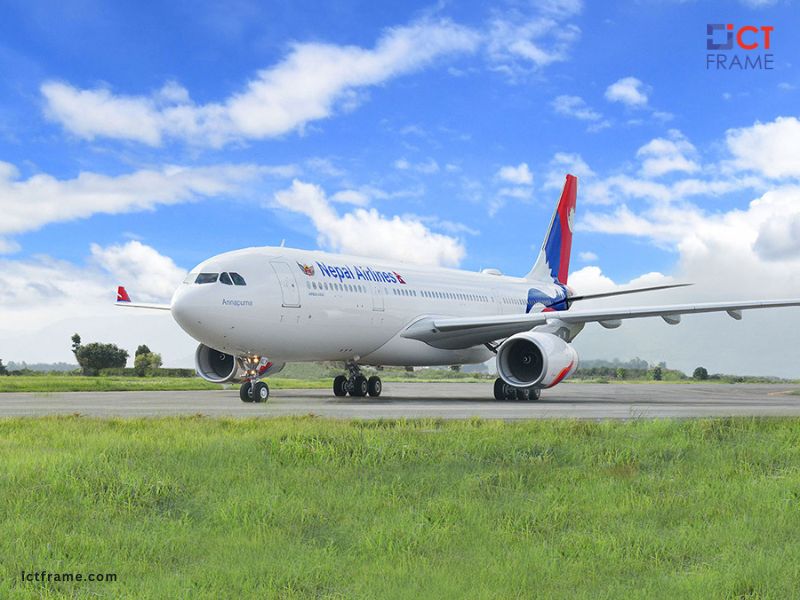Nepal Floods and Landslides: NAC Airbus Deploys as Digital Lifeline
Nepal Disaster Air Travel
5th October 2025, Kathmandu
Widespread floods and devastating landslides across Nepal have severely disrupted major road transport networks.
Nepal Disaster Air Travel
These natural hazards cripple essential highways, completely isolating regions and stranding thousands of passengers. In response, Nepal Airlines Corporation (NAC) is actively implementing a critical digital and logistical solution.
NAC announced special flights between Kathmandu and Bhairahawa on Monday, October 6, using an Airbus A320. This urgent deployment establishes a vital Nepal Disaster Air Travel corridor.
The move offers a crucial air bridge, ensuring people can reach their destinations despite ground failures.
Why Air Travel Becomes the Only Option
Monsoon-related disasters routinely paralyze Nepal’s road infrastructure. Key arteries, including the vital Siddhartha Highway, often suffer complete blockages from mud and debris.
Road closures not only strand travellers but also cut off the supply chain for essential goods. This logistical crisis elevates the urgency for alternative transport.
NAC spokesperson Subas Dangi confirmed the scheduling of two special flights. The narrow-body Airbus A320 aircraft provides a high-capacity solution.
It effectively eases the pressure created by the extensive road disruptions. The initiative showcases how modern aviation technology becomes an indispensable tool for disaster relief and connectivity.
The Digital Backbone of Relief Operations
Scheduling and booking for these special flights rely entirely on robust digital infrastructure. NAC is actively using its online portal and sales channels to manage the high demand.
Stranded travellers quickly access real-time flight information and reserve tickets electronically. This rapid digital transaction system streamlines the relief effort, preventing the chaos that often accompanies manual booking during emergencies.
The special flight aims specifically to transport travellers isolated by the highway closures. It ensures their urgent travel needs are met quickly and securely.
The Nepal Disaster Air Travel schedule includes a one-way trip from Kathmandu departing at 1:00 pm. The return flight from Bhairahawa leaves at 2:45 pm.
This swift turnaround maximizes the use of the aircraft. It increases the total number of passengers rescued and transported within the short operational window.
The efficient scheduling depends on seamless communication between air traffic control, ground crews, and the airline’s management systems.
Fare Structure and Passenger Convenience
NAC has structured the fare to balance urgency with accessibility. The ticket price is set at Rs 5,000 for the Kathmandu–Bhairahawa route. The return journey, Bhairahawa–Kathmandu, costs Rs 7,000. These rates aim to offer a viable alternative to the heavily inflated prices often seen in black markets during a crisis.
Furthermore, the airline has generously set the luggage limit. Passengers are allowed to carry up to 30 kilograms of checked luggage. This allowance significantly exceeds standard domestic flight limits in Nepal.
It acknowledges that stranded individuals may carry extra belongings or essential supplies. The increased baggage capacity directly addresses the severe distress faced by those impacted by the long road closures. It provides crucial support for families and individuals needing to move supplies.
Proactive Civil Aviation in Disaster Response
The deployment of a large Airbus A320 on a route typically served by smaller, regional planes marks a significant operational pivot. It demonstrates the national flag carrier’s active role in civil society and disaster response.
NAC quickly activated its resources upon the declaration of the widespread road disruption. This proactive stance helps maintain the integrity of the country’s transportation system.
The continuous rainfall and recurring threat of landslides demand this type of high-level preparedness. Airlines, supported by advanced ICT systems, offer the only dependable means of movement when ground links fail.
The special flights successfully connect Gautam Buddha International Airport (Bhairahawa) with Tribhuvan International Airport (Kathmandu).
This vital link ensures that even with land routes blocked, the major metropolitan hubs remain accessible. This Nepal Disaster Air Travel operation is an ongoing commitment to national connectivity during times of crisis. It highlights the essential link between aviation, digital coordination, and national resilience.
For more : Nepal Disaster Air Travel








